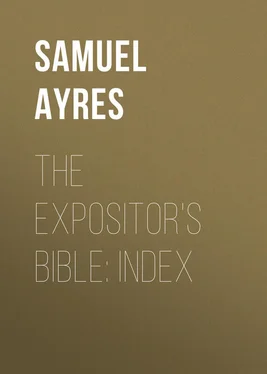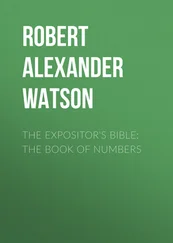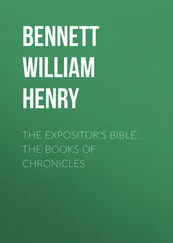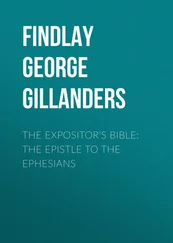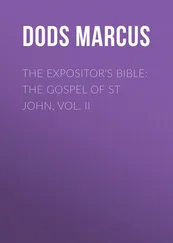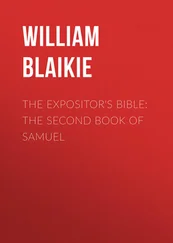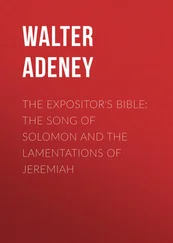Samuel Ayres - The Expositor's Bible - Index
Здесь есть возможность читать онлайн «Samuel Ayres - The Expositor's Bible - Index» — ознакомительный отрывок электронной книги совершенно бесплатно, а после прочтения отрывка купить полную версию. В некоторых случаях можно слушать аудио, скачать через торрент в формате fb2 и присутствует краткое содержание. ISBN: , Издательство: Иностранный паблик, Жанр: foreign_religion, foreign_antique, foreign_prose, на английском языке. Описание произведения, (предисловие) а так же отзывы посетителей доступны на портале библиотеки ЛибКат.
- Название:The Expositor's Bible: Index
- Автор:
- Издательство:Иностранный паблик
- Жанр:
- Год:неизвестен
- ISBN:http://www.gutenberg.org/ebooks/39819
- Рейтинг книги:3 / 5. Голосов: 1
-
Избранное:Добавить в избранное
- Отзывы:
-
Ваша оценка:
- 60
- 1
- 2
- 3
- 4
- 5
The Expositor's Bible: Index: краткое содержание, описание и аннотация
Предлагаем к чтению аннотацию, описание, краткое содержание или предисловие (зависит от того, что написал сам автор книги «The Expositor's Bible: Index»). Если вы не нашли необходимую информацию о книге — напишите в комментариях, мы постараемся отыскать её.
The Expositor's Bible: Index — читать онлайн ознакомительный отрывок
Ниже представлен текст книги, разбитый по страницам. Система сохранения места последней прочитанной страницы, позволяет с удобством читать онлайн бесплатно книгу «The Expositor's Bible: Index», без необходимости каждый раз заново искать на чём Вы остановились. Поставьте закладку, и сможете в любой момент перейти на страницу, на которой закончили чтение.
Интервал:
Закладка:
The question of the Pastoral Epistles must be considered as still one meeting with doubtful answers. Many scholars who accept all the ten epistles of St. Paul to the Churches agree with Marcion of the second century in not admitting these three works. Still they are defended by most British and American New Testament 49 49 Not by Davidson, however, nor more recently by Bacon or Moffatt. Dr. Horton ( Century Bible ) balances the arguments pro and con and refuses to decide either way.
scholars, and some who do not allow that in their present form they can be attributed to the Apostle still admit that they contain fragments of the Apostle's genuine writings. 50 50 This is Harnach's view. On the other hand so independent a scholar and drastic a critic as Mr. Conybeare told the present writer that he had no doubt of their genuineness.
The Epistle to the Hebrews is now universally admitted not to be a work of St. Paul. The book itself makes no claim to be such, and it is unfortunate that the English Revisers retained the misleading title ascribing it to "Paul the Apostle," a late superscription of no historical value. Happily the American Revisers have struck this out. Claims for Barnabas and for Apollos as its author have their advocates; and lately Prof. Harnach has hit on the happy guess, backed up by considerations of some amount of probability, that its author was a woman – Priscilla. But most scholars feel it necessary to abide by Origen's negative conclusion: "Who wrote the epistle God only knows." That it is a most valuable work of high inspiration well worthy of a place in the canon in spite of its anonymity cannot be doubted. It has recently received special attention from scholars in the form of fresh and luminous exposition. 51 51 Especially by Menégoz, Bruce, and Milligan.
I Peter has been somewhat severely handled in recent times, Harnach regarding it as the work of some unknown disciple of St. Paul. But the growing perception of a rapprochement between the two great Apostles, which is seen in recent scholarship, points to the conclusion that St. Peter, who was evidently a man of a most impressionable nature, may not have felt himself above receiving influences from the great Apostle of the Gentiles; and it is not to be denied that there are features of the epistle which link it more closely with St. Peter's speeches in Acts than with the writings of St. Paul. On the other hand 2 Peter is the one book of the New Testament now almost universally treated as not genuine; it was the latest to be accepted in the primitive church. 52 52 Still it is vindicated by Dr. Bigg, International Commentary .
James is regarded as a genuine work of the head of the Church at Jerusalem by its chief English commentator, 53 53 J. B. Mayor, The Epistle of St. James .
although most German and American scholars who have written about it recently assign it to a very late date. 54 54 E. g. , Pfleiderer, Holtzmann, Jülicher, Harnach, the last regarding it as a collection of sermon notes put together by some unknown James in the second century. But are not its very archaic features against this view?
The Epistles of John are now almost universally admitted to be the work of the author of the fourth gospel. Little can be said as to the Epistle of Jude except that its free use of Apocryphal books has been clearly demonstrated. But, lastly, a flood of light has been thrown on the Revelation by recent studies in Jewish Apocalyptic literature, and even in Babylonian mythology. 55 55 As expounded by Gunkel, Bousset, and Charles.
It has been shown that this mysterious book, which many had regarded as unique in literature, may be associated with a school of Jewish and Christian Apocalyptic writings from some of the former of which it draws its materials. Then, as the inquiry is pushed further back, some of the most remarkable imagery is traced through these Jewish writings to Babylonian legends. While this interesting process may help to account for the form of the book, it does not touch its essence and that marvelous inspiration by virtue of which it soars above all possible rivals and it is to us the Apocalypt, the one book in which the Spirit of God unveils the springs and purposes of the providence of history.
During recent years the methods of the commentator have undergone almost as great a revolution as those of the critic. New dictionaries and grammars 56 56 E. g. , Grim-Thayer, Greek-English Lexicon of the New Testament , and Grammars of New Testament Greek by Winer, Schmiedel and by Blass.
have helped to a more accurate understanding of words and phrases. But the most remarkable contribution to this form of study comes from a wholly new region, the region of contemporary records. Inscriptions in Greece and Asia Minor and Papyri discovered in Egypt, dating from the very time when the New Testament was written, are found to contain phrases identical with what we had been accustomed to regard as peculiarly characteristic of Hellenistic or New Testament Greek. The conclusion to be drawn from these remarkable discoveries is that the books of the New Testament were written in the ordinary spoken Greek of their day, the very same form of language in which leases were drawn up and private letters were written by people at Oxyrhynchus in Egypt, in which inscriptions were chiseled by sculptors in Cos among the isles of Greece. From this we are led to see the mistake of the old commentators in interpreting the New Testament by means of their knowledge of the classics. The consequence is that the Revised Version must be regarded as already partially out of date, since its committees were dominated by English university classical scholarship, as represented by Dr. Ellicott, the chairman of the English committee.
Another modern movement of research also carries us away from the old classicism. While the New Testament writers used the colloquial language of the cosmopolitan Greek-speaking people of their day, they were all, or nearly all, brought up in Jewish schools and taught to think in Jewish modes of thought. This indicates that some of their expressions can best be interpreted by a knowledge of Aramaic, the language of Palestine in the time of Christ. And now Aramaic studies have been brought in to assist in the interpretation of the New Testament with luminous results. 57 57 See Deissmann, Bible Studies ; Dalman, The Words of Jesus .
Two further characteristics may be observed in the new modern commentaries. 58 58 On the whole the best English and American series of commentaries is that known as the International Critical Commentary ; the most recent work of smaller dimensions is The Century Bible .
One is a vigorous effort to arrive at the original meaning of the books, rather than to the exclusion of any reference to theological systems of later date; in other words, honest exegesis, rather than polemical discussion. The other characteristic is a broader method of treatment in seeking for the ideas of the sacred writings as more important than the minute study of words which characterized the scholarship of the last generation of commentators. The older commentaries were mainly grammatical; the newer commentaries are chiefly historical, theological or philosophical. 59 59 E. g. , Ramsay on Galatians, Wellhausen on the Synoptic Gospels , the Abbé Loisy on St. John .
In harmony with this later method of exegesis the Expositor's Bible may be regarded as a great commentary on the Holy Scriptures, as well as a work of exposition.
It is no longer possible for the fully equipped scribe who is to bring out of his treasury things new and old to be "a man of one book." While the center of his studies must be the Scriptures, he has undertaken to explain, his very explanation of them is largely dependent on his gleanings from other fields of learning. Formerly the Bible was regarded by itself in dazzling isolation, like a statue set on a pedestal. Now we discover that we can see it much better when it stands in its place, which is not a mere niche in the wall of the temple of humanity, but the central shrine of all history. The life and thought of the world in which the New Testament first appeared must not be treated as the mere frame of the picture, although even that would be something, for a suitable frame helps to show its contents to the best advantage. But we should rather think of the circumstances and setting of the gospel and apostolic stories as background and even in part foreground to the Christian revelation. It must be confessed that sometimes these accessories are painted with so much Pre-raffaelite force and color that there is a danger of missing the message of the picture owing to the distraction of the accessories. A knowledge of the geography of Palestine, Eastern manners and customs, the state of the Roman world at the time of Christ, contemporary Greek philosophy, and a host of other matters more or less remote from the central theme of the New Testament, must not be allowed to overshadow that central theme. The picturesqueness of modern writing threatens this danger; and modern writing is nothing if it is not picturesque. But true illustration, such as is aimed at in the Expositor's Bible, goes deeper. It does not detract from the interest of the New Testament itself by the meretricious charms of the surroundings, a materializing and secularizing of the sacred and spiritual of which some of the most popular modern Lives of Christ are guilty. On the contrary, it seeks to throw light on the New Testament itself, explaining obscurities, vivifying what had not been fully realized before, setting the whole picture before us in warm colors of life. Used in this way the fruits of the Palestine Exploration Fund prove to be of great value. Then scholars of contemporary Jewish life and thought have enabled us to see more clearly the actual condition of the people among whom Jesus lived, 60 60 See especially Schürer, The Jewish People in the Time of Jesus Christ ; Edersheim, Jesus the Messiah ; Bousset, Die Religion Des Judentums ; Volz, Judische Eschatolagie .
and those who have been investigating the history and archæology of the Roman Empire of this period have enabled us to see much more clearly, how the Apostles carried out their wider mission, how the first churches were founded in the larger world, and how the primitive Christian life was lived in the midst of pagan surroundings. 61 61 See Mommsen, Provinces of the Roman Empire ; Ramsay, The Church in the Roman Empire , &c.
Интервал:
Закладка:
Похожие книги на «The Expositor's Bible: Index»
Представляем Вашему вниманию похожие книги на «The Expositor's Bible: Index» списком для выбора. Мы отобрали схожую по названию и смыслу литературу в надежде предоставить читателям больше вариантов отыскать новые, интересные, ещё непрочитанные произведения.
Обсуждение, отзывы о книге «The Expositor's Bible: Index» и просто собственные мнения читателей. Оставьте ваши комментарии, напишите, что Вы думаете о произведении, его смысле или главных героях. Укажите что конкретно понравилось, а что нет, и почему Вы так считаете.
